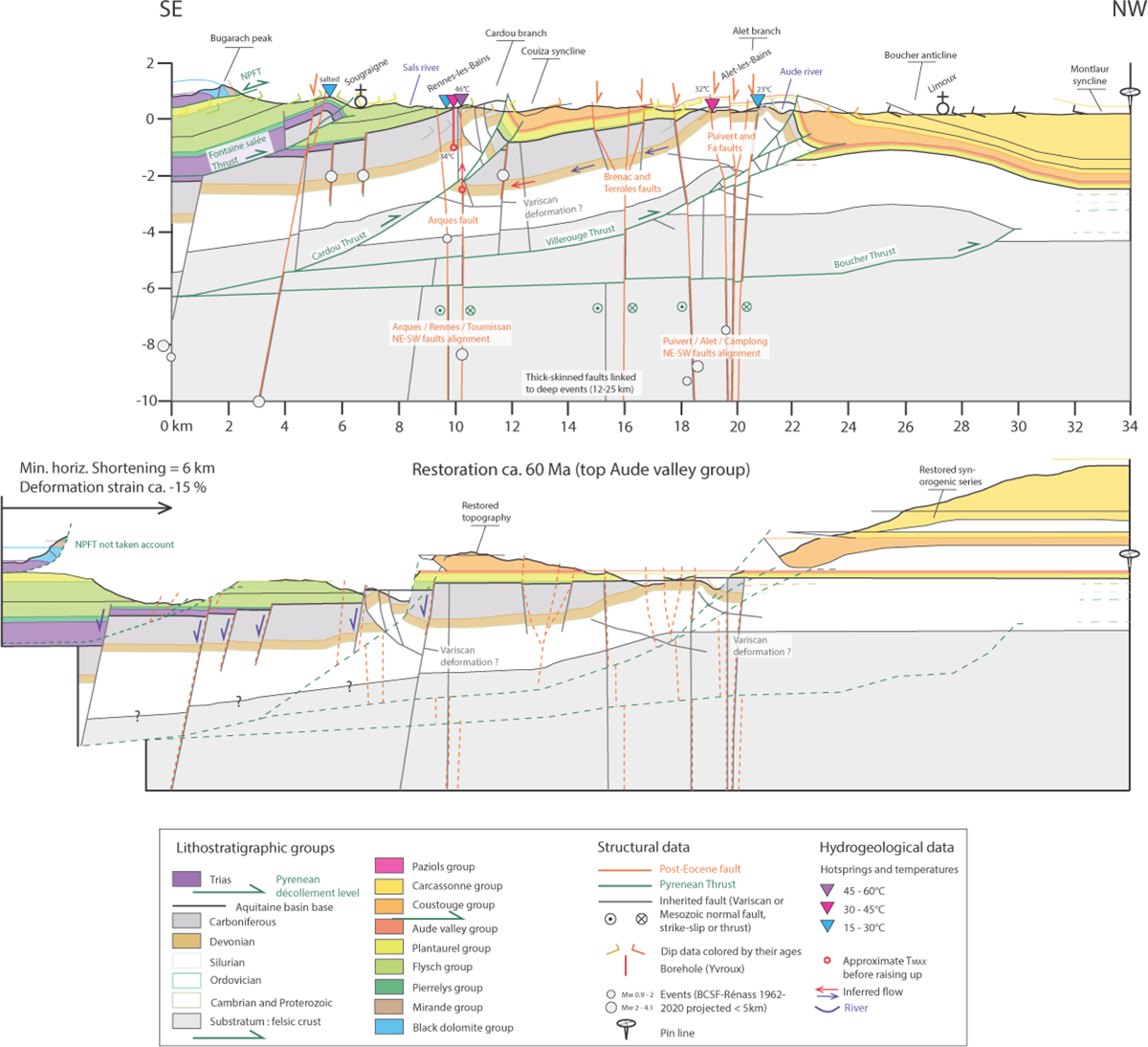Fig. 9

Download original image
Les Bains balanced cross-section and its Paleocene restoration (transect in Fig. 8). Paleozoic series thicknesses are extracted from the southern flank of the Montagne Noire and the Mouthoumet Massif. The Villerouge, Cardou and Boucher Thrusts are connected beneath the Mouthoumet Massif. The Fontaine salée Thrust is branched into the Triassic evaporites and brings a block of Carboniferous with a short-cut geometry. Hydrothermal waters mainly come laterally of the cross-section from the eastern Devonian series but an indicative 2D path is proposed (see cartographic groundwater flow in Fig. 8 and text for further details). Natural 46 °C springs come from the reservoir of the footwall of the Cardou thrust favor to NE-SW Arques fault, althougt the Yvroux borehole pumps the hangingwall shallower and colder 34 °C reservoir. In the restoration, the syn-orogenic serie thicknesses date the shortening during the FS2 phase. The origin of inherited faults is determined as Mesozoic or post-Variscan inherited transtensive (normal and/or strike-slip) faults or Variscan thrusts verging SW. Paleozoic series are considered flat when no data are available for the basement. Blue arrows represent Mesozoic normal displacement on NE-SW faults. Post-Eocene orange normal faults are connected to deep (12-25 km) events and interpreted with a sinistral strike-slip Eocene motion (FS2, colored in green).
Current usage metrics show cumulative count of Article Views (full-text article views including HTML views, PDF and ePub downloads, according to the available data) and Abstracts Views on Vision4Press platform.
Data correspond to usage on the plateform after 2015. The current usage metrics is available 48-96 hours after online publication and is updated daily on week days.
Initial download of the metrics may take a while.




